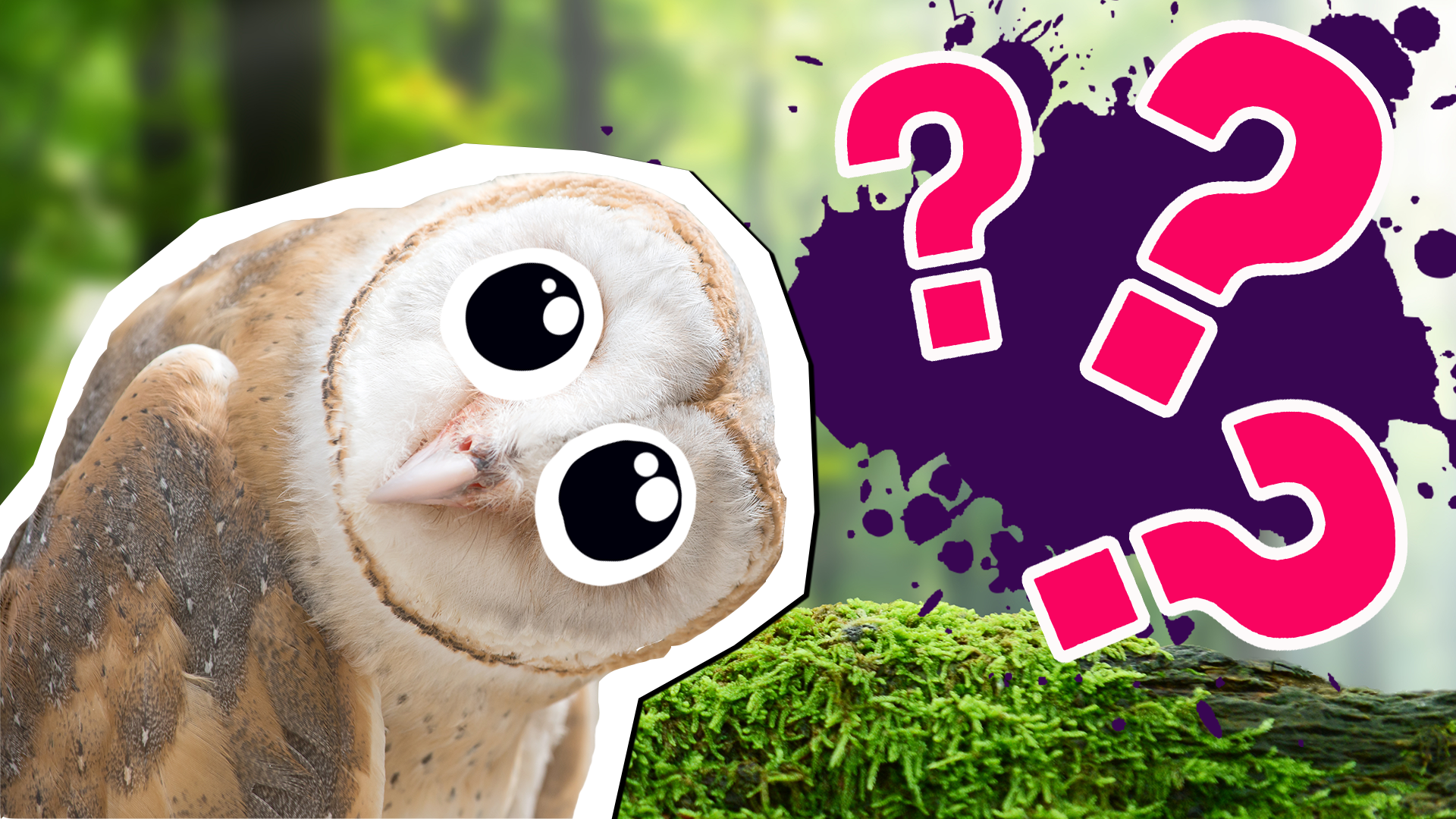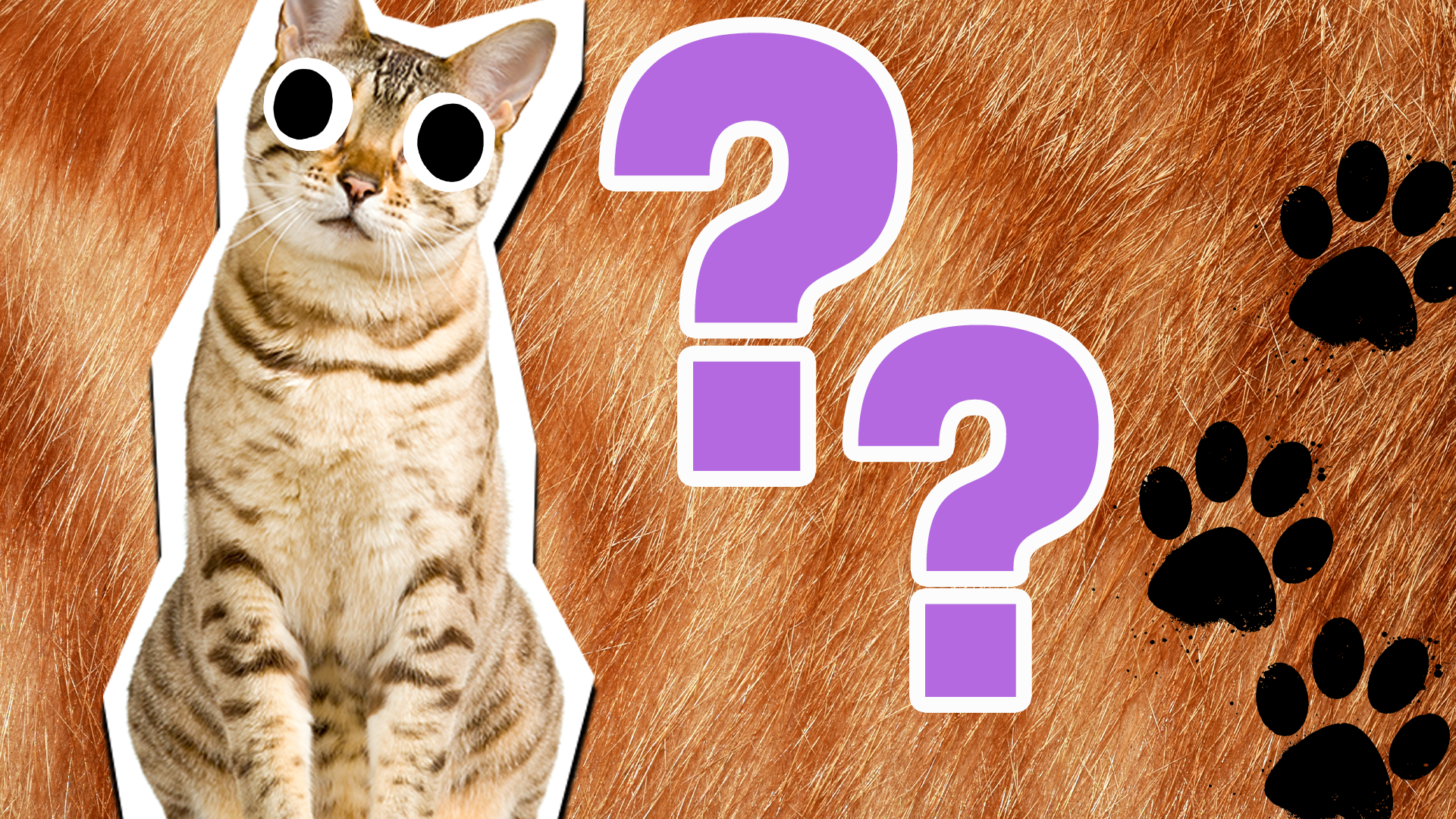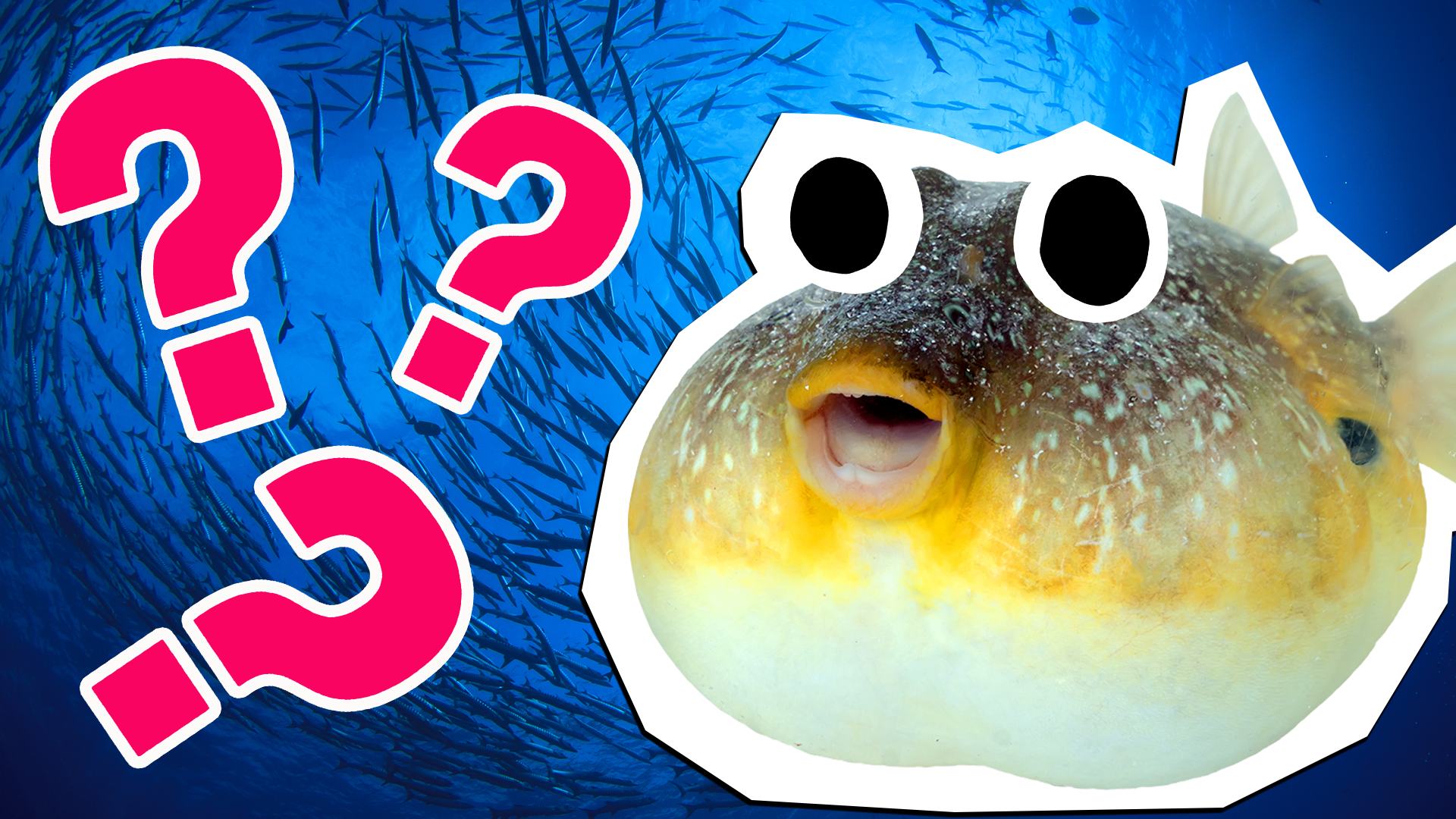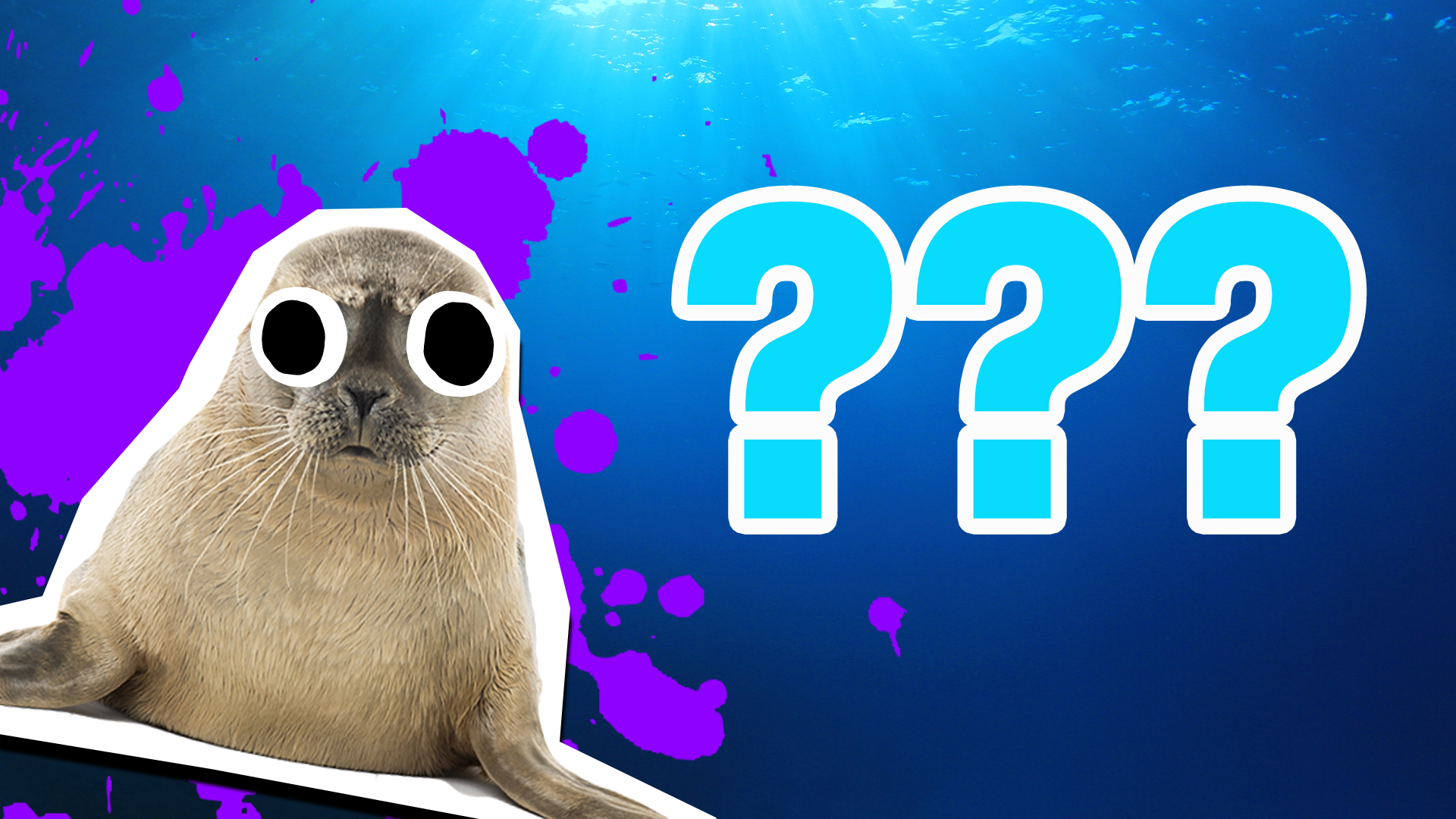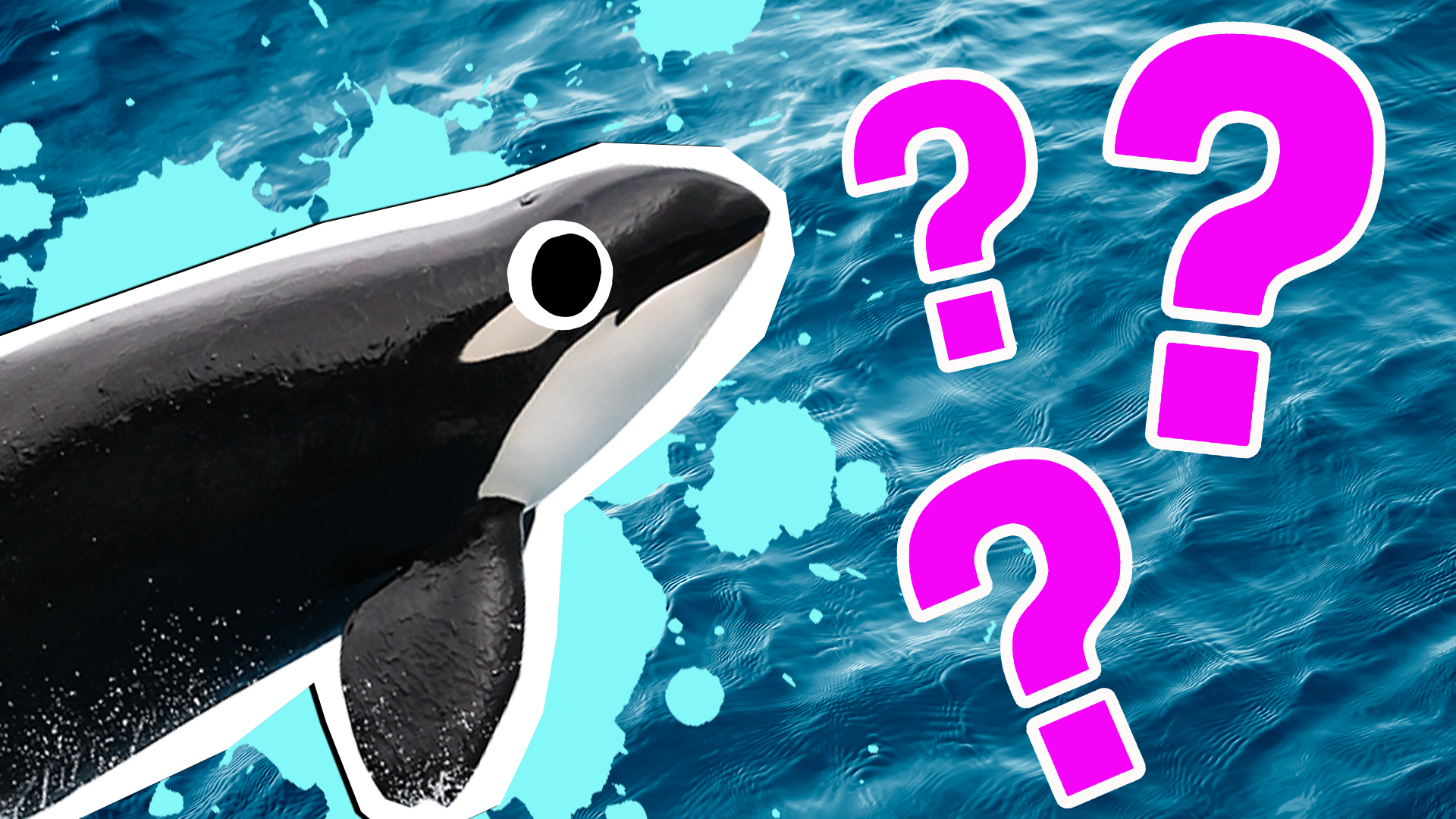15 Beak-Dropping Pelican Facts!
Get ready to learn all about these big-mouthed giants of the skies - their eating habits, social lives, and why their throats are like that!
Pelicans are one of the most famous birds in the world! They're mostly famous for those very distinctive bills - maybe you've heard the old joke: "Why did the pelican get kicked out of the restaurant? Because his bill was too big!" But there's a lot more that you probably don't know about these fascinating creatures! Learn where they live, how they like to catch their prey, and why one species of pelican almost went extinct!
Still feeling feathery? Why not check out some of our other excellent bird facts? Learn all about albatrosses, the other giants of the sky; or become an expert on barn owls!
1. There are eight species
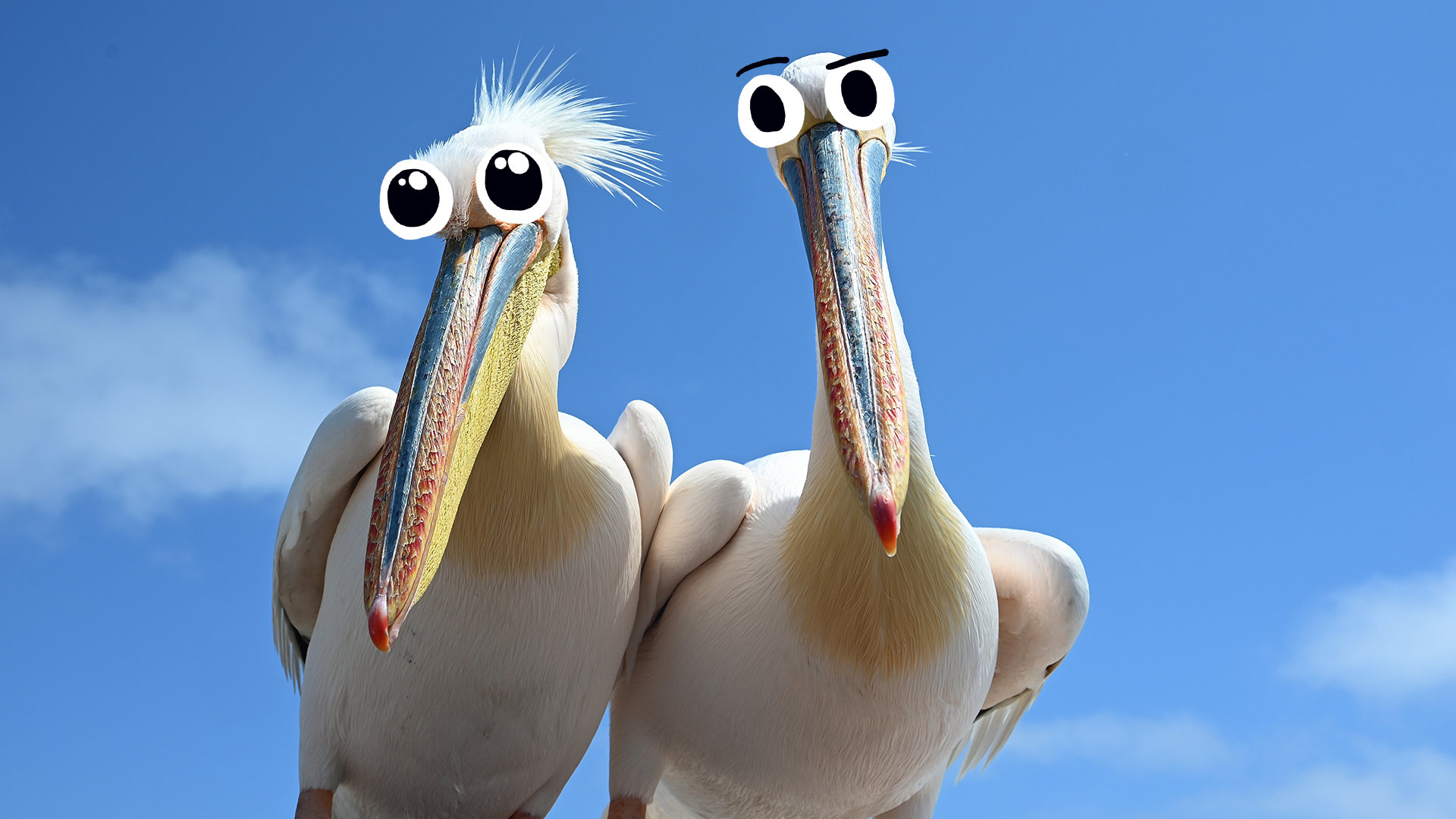
There are eight species of pelican in total! The brown pelican and the American white pelican are the two best-known species, but you'll also find Peruvian pelicans, great white pelicans, Australian pelicans, pink-backed pelicans, Dalmation pelicans, and spot-billed pelicans! They have different colouring, habits and environments, but all of them have the characteristic large beak and throat pouch.
2. They live in a lot of places
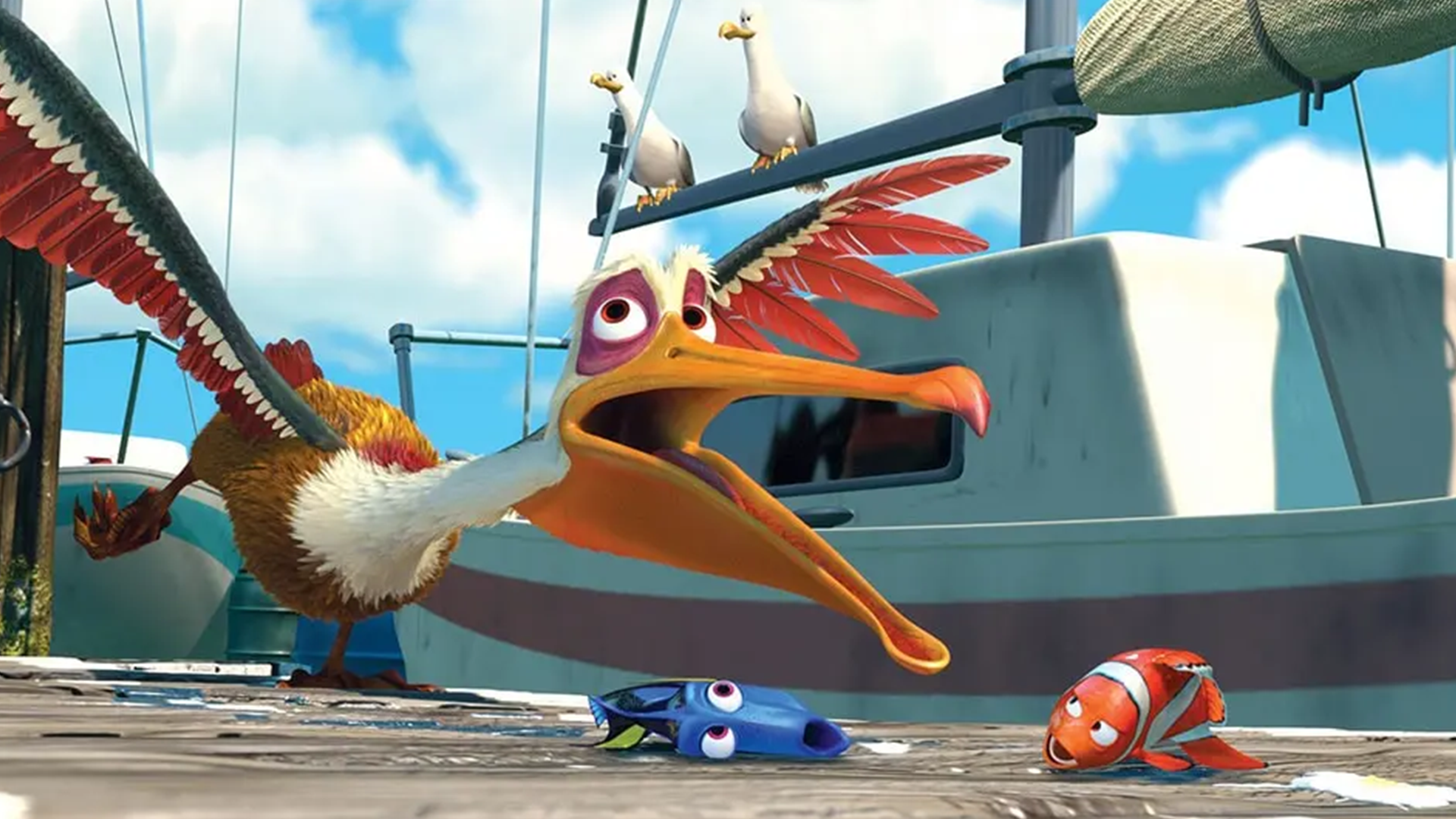
Pelicans can be found all over the world - in fact, the only place they never show up is in Antarctica! They prefer warm regions so you're most likely to spot one somewhere hot. To spot a pelican, you should first decide which kind you want to see and then follow expert's tips. So, if you want to see a brown pelican, your best bet is to go to the coasts of the southern USA, Mexico, Guatemala, Costa Rica, Nicaragua, Panama, and northernmost South America! Fun fact: Nigel the pelican in Finding Nemo is a brown pelican, a species that doesn't live in Australia, where the film is set!
3. They're old!
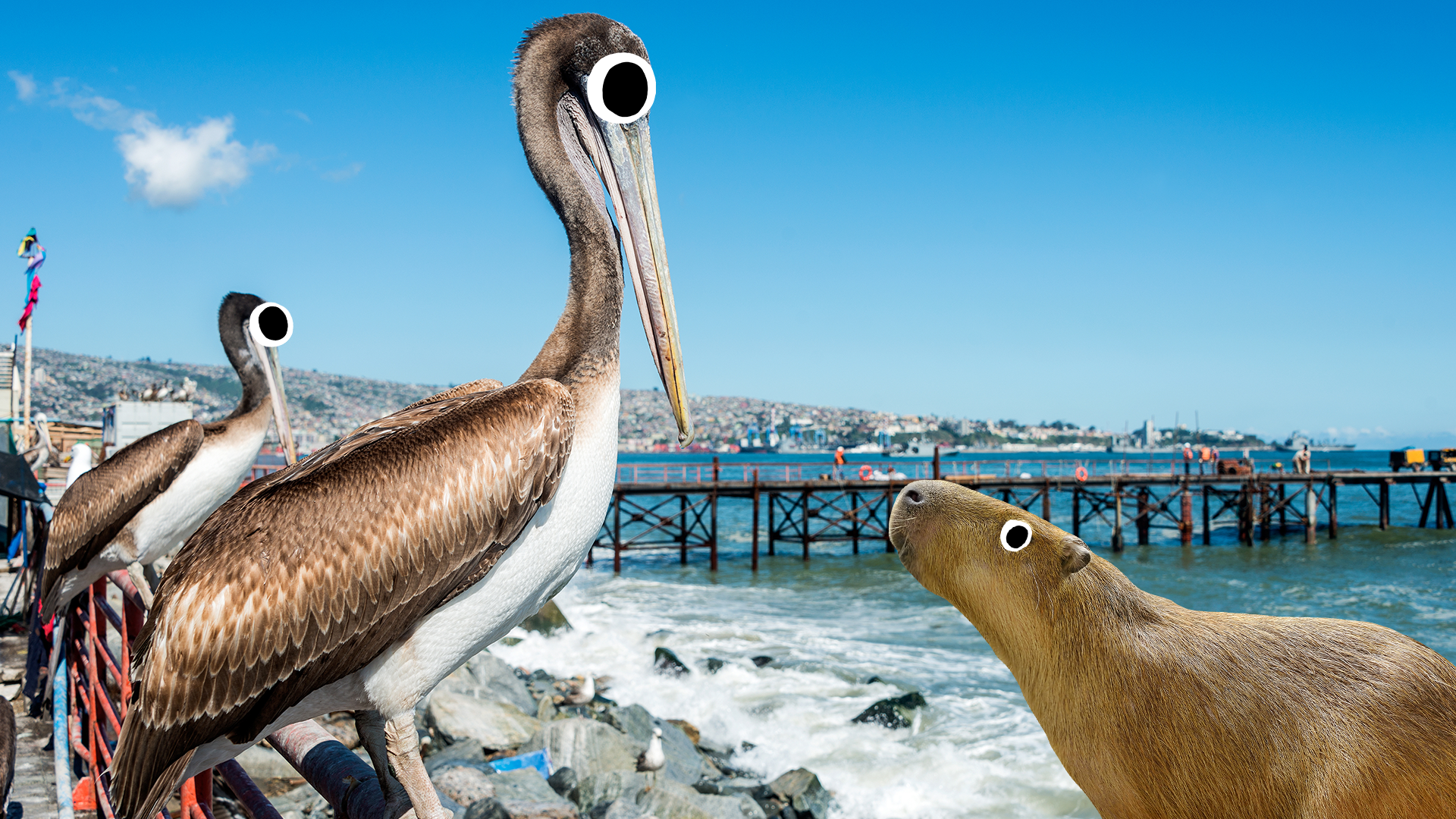
Pelicans have been around for at least 36 million years, and the oldest pelican fossil is about 30 million years old! This qualifies them as living fossils (animals whose biology has not changed much over millions of years), along with crocodiles, capybaras, koalas, goblin sharks, horseshoe crabs, and more!
4. They're not picky when it comes to food
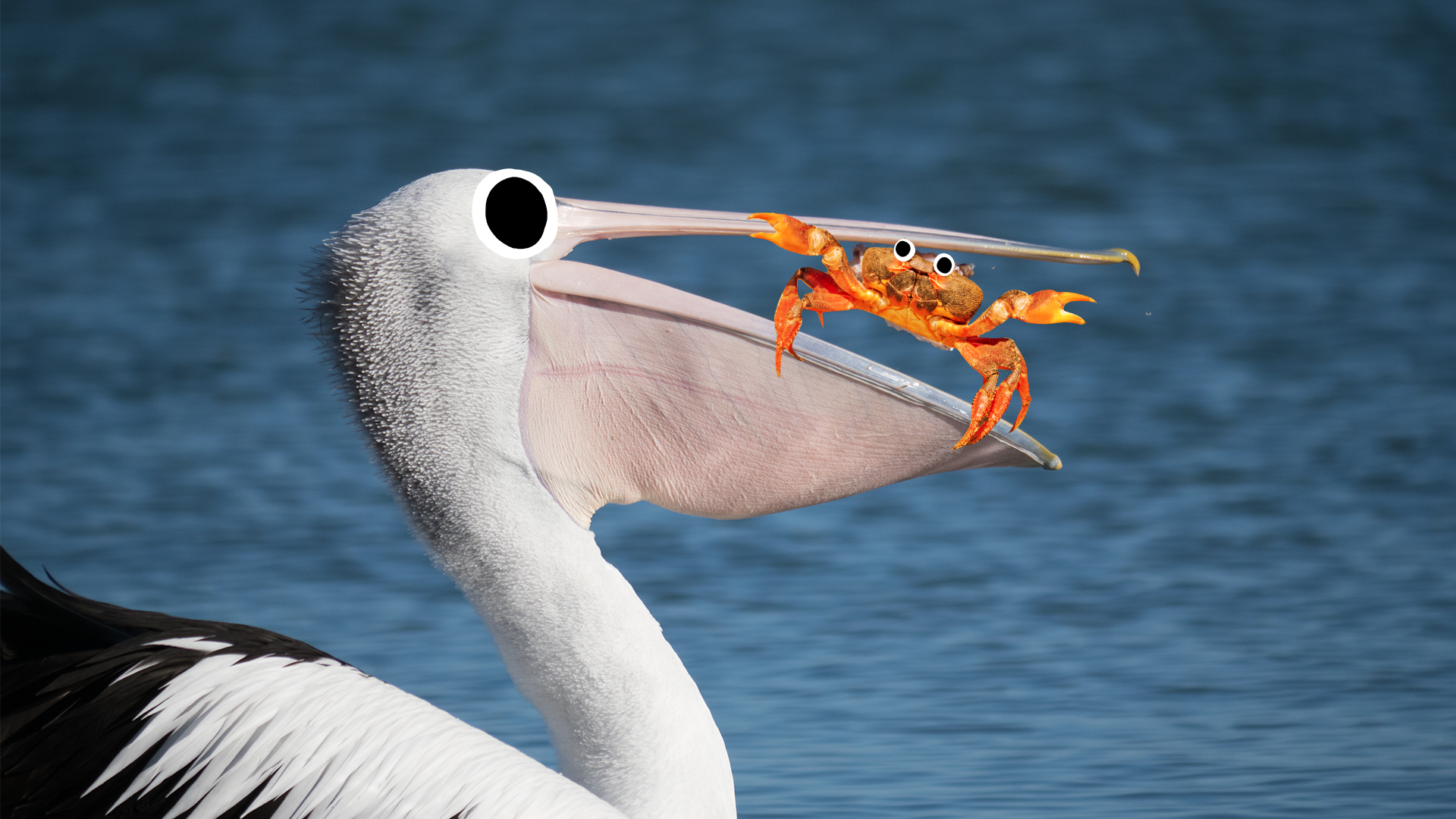
Pelicans are known for fishing (more on that later!), but when it comes to food they're actually not vey picky at all. They will also eat amphibians, insects, crustaceans, reptiles, mammals - and even other birds! The general rule is that if the pelican can fit it in its mouth, it will try to eat it. In 2006, a pelican made UK headlines when it was spotted swallowing a pigeon whole in London's St. James Park! Another clip went viral in the 2020s of a pelican trying to nibble on a baby capybara. The capybara was way too big for the pelican to eat, and it looked pretty sad when it realised it wouldn't work!
5. They dive for food
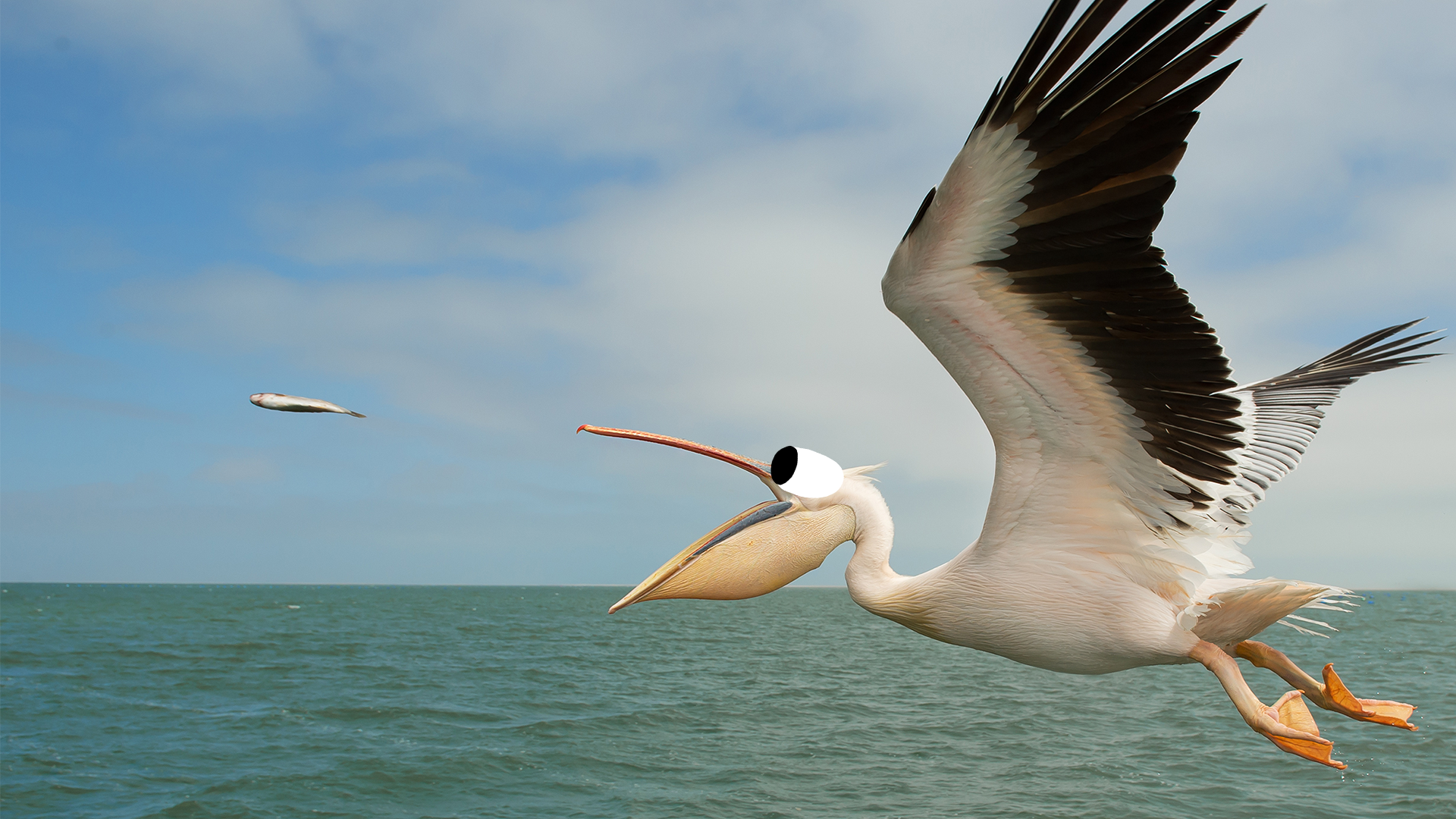
Pelicans are seabirds, so if they want to catch their favourite food (fish), they have to work for it. Two species of pelican, the brown and the Peruvian, dive into the water to catch their prey. Both species have excellent eyesight, and the brown pelican can spot prey in the water from up to 60 feet overhead! When it has a target, the pelicans will dive sharply into the water beak-first to grab it. It's such a high-impact crash that it usually stuns the prey, making it easy for the pelican to scoop it up. Now, if you or I divebombed into the water headfirst at that height we'd do some serious damage to our heads and spines (if we were lucky!) - but pelicans know how to prepare. They stiffen their necks and throw their wings straight out behind them, making the dive more streamlined and preparing properly for impact. They also have a specially adapted body, with air sacs in their neck and chest, and their throat-puches, acting like airbags to slow down the impact.
6. They're social
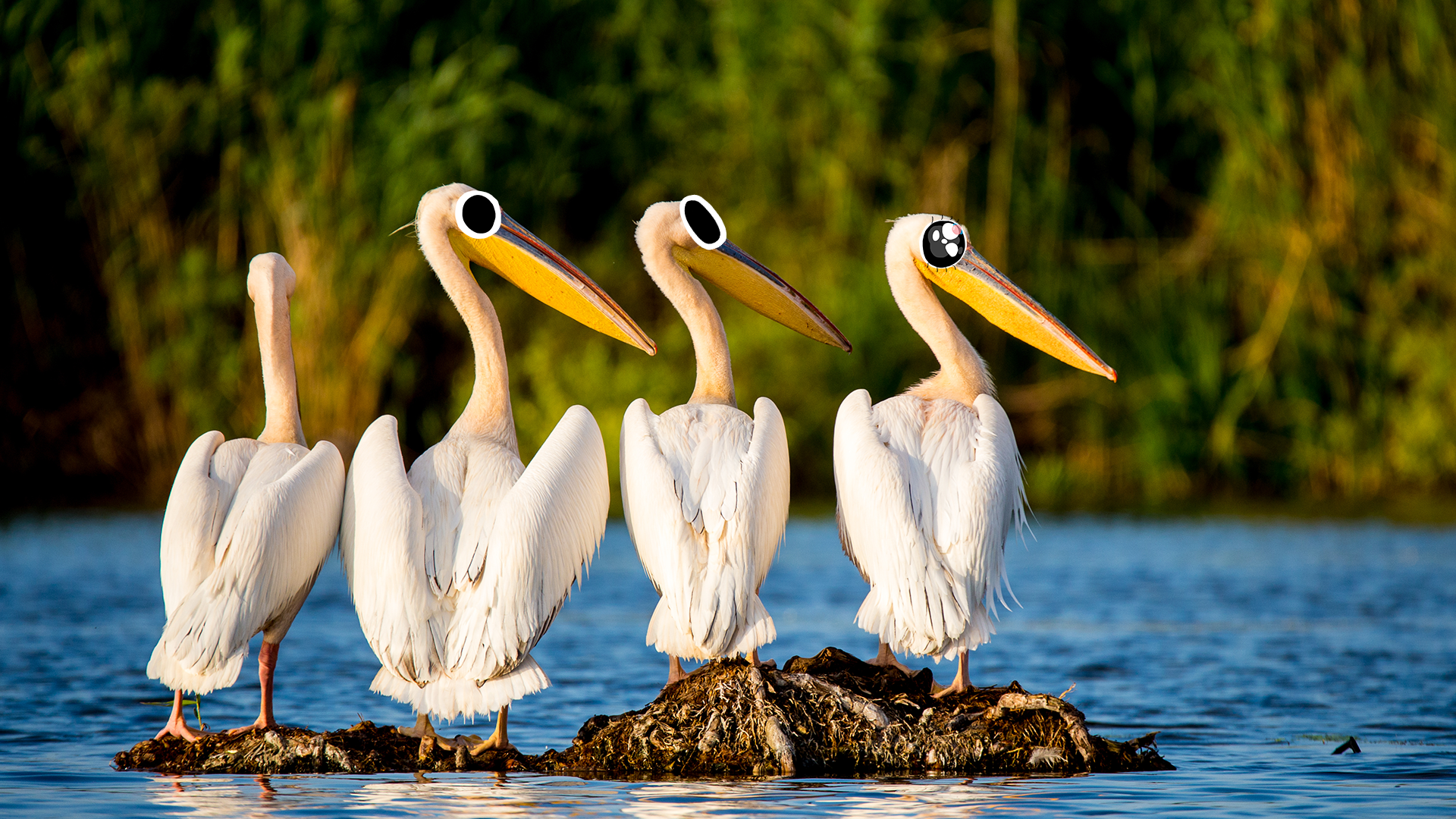
Pelicans are classified as "gregarious", which means they are social creatures that gather in colonies. Most species of pelican don't dive-bomb, and they have been observed working together to catch prey! These species catch fish by scooping it up as they skim along the surface of the water, and will work together by forming a group and hunting in a U-shaped formation. This gathers fish into a small group easy to scoop up. One species, the Dalmation pelican, has been observed working with great cormorants to catch their supper!
7. Their throats are pretty amazing
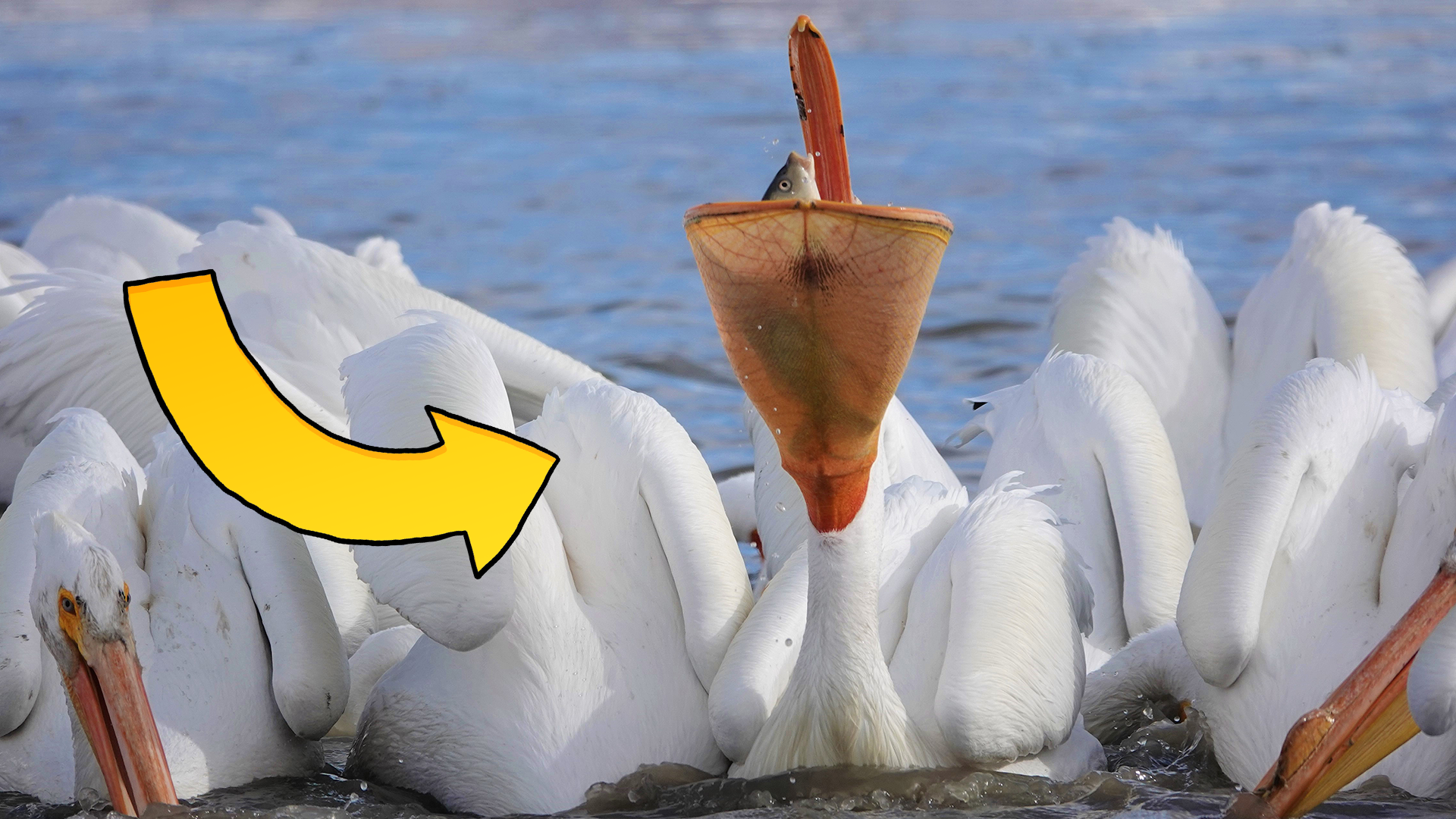
There's a common misconception that pelicans use their wide throats to store food, like hamsters do in their cheek pouches. This is actually false! The gular pouch (or gular sac) isn't a lunch box, but actually part of the pelican's method of capturing its food. They can expand their jaw bones, allowing their lower beak and gular pouch to act like a fishing net. When they're done fishing, they expel the excess water by tilting their heads and contracting their throat muscles - then swallow their prey! The misconception probably came from a 1910 limerick by Dixon Lanier Merritt: "A wonderful bird is the pelican, His bill will hold more than his belican. He can take in his beak, Food enough for a week, I'm damned if I know how the helican!"
8. They're mouth breathers
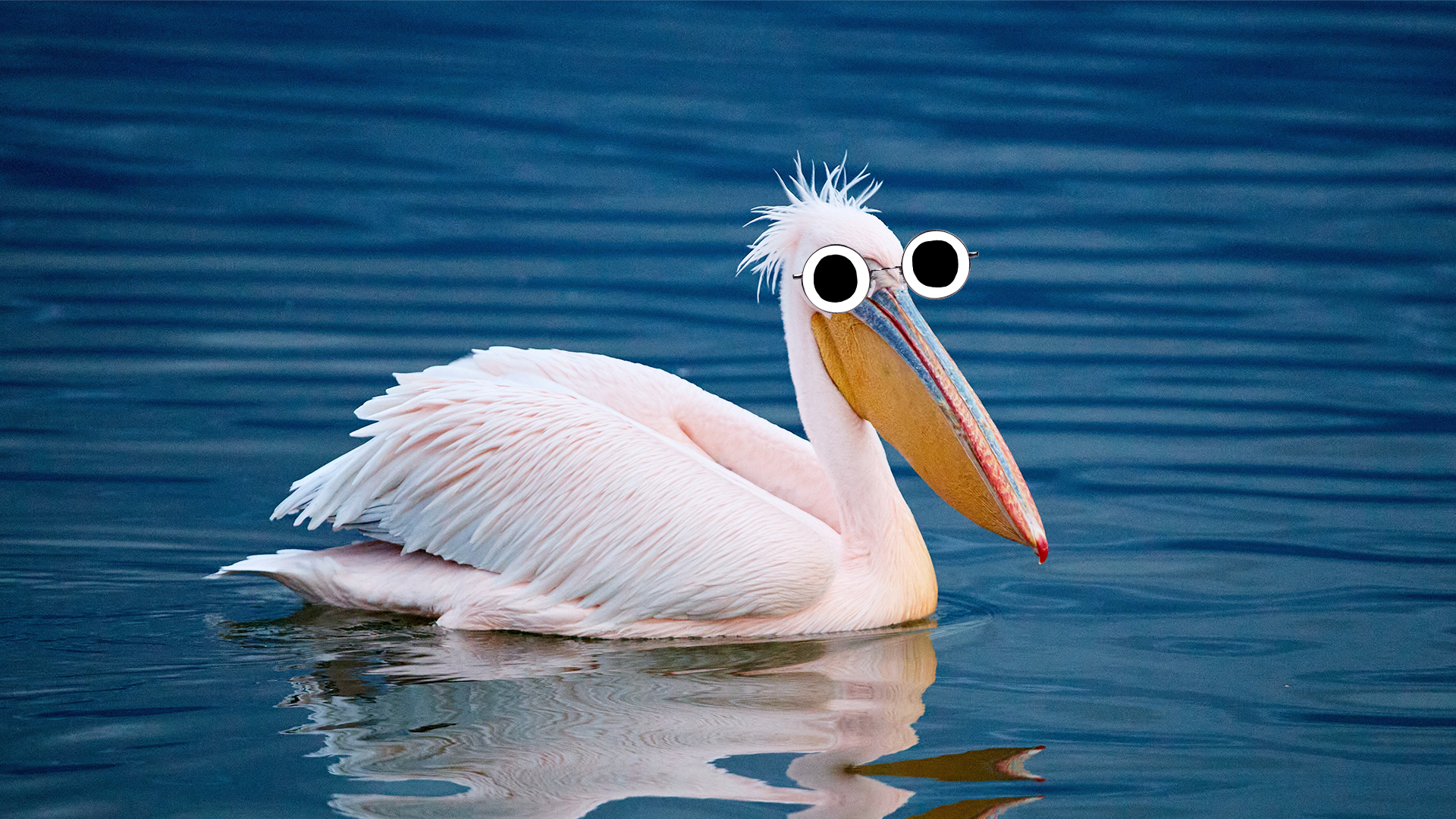
You'll never see a pelican guest star on Stranger Things - they're not cool enough! Pelicans have nasal passages, but their nostrils are sealed up, which means they mostly breathe through their mouths. Those nasal passages aren't totally useless though, because they have special glands in them that remove excess salt from the pelican's bloodstream. This is very important, because as seabirds they drink a lot of seawater, and too much salt isn't good for them!
9. They're BIG
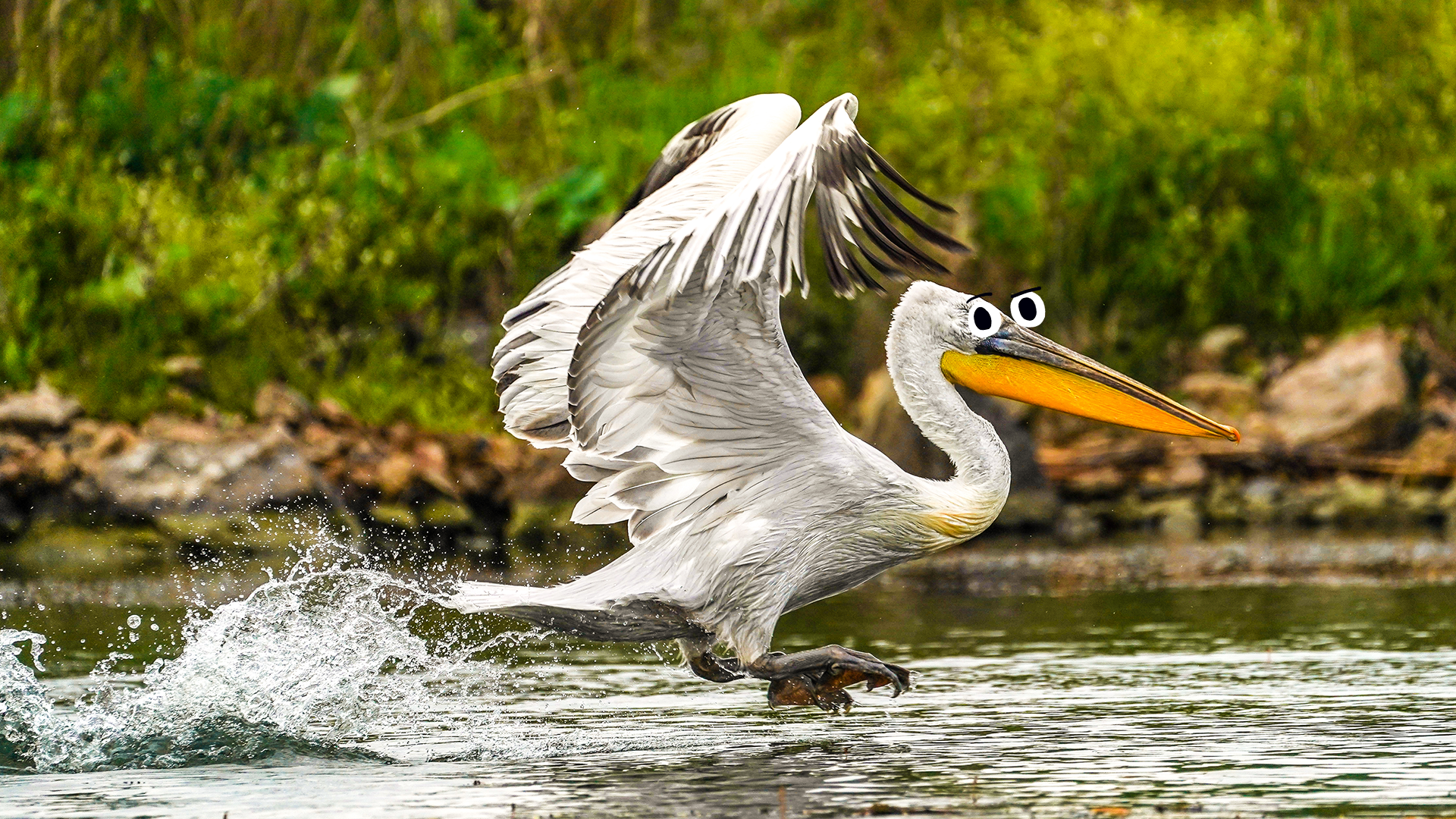
They're not the biggest seabird (that title still belongs to the great albatross), but pelicans are still very big creatures! Their wingspan ranges from 6 to 12 feet depending on the species - brown pelicans are the smallest, and Dalmation pelicans are the biggest! They also have an unusually high number of secondary flight feathers - between 30 and 35! The boys are generally bigger than the girls in all species, and they also tend to have longer bills. The Australian pelican's bill can get up to half a metre long - the longest of any bird!
10. Brown pelicans made a spectacular comeback
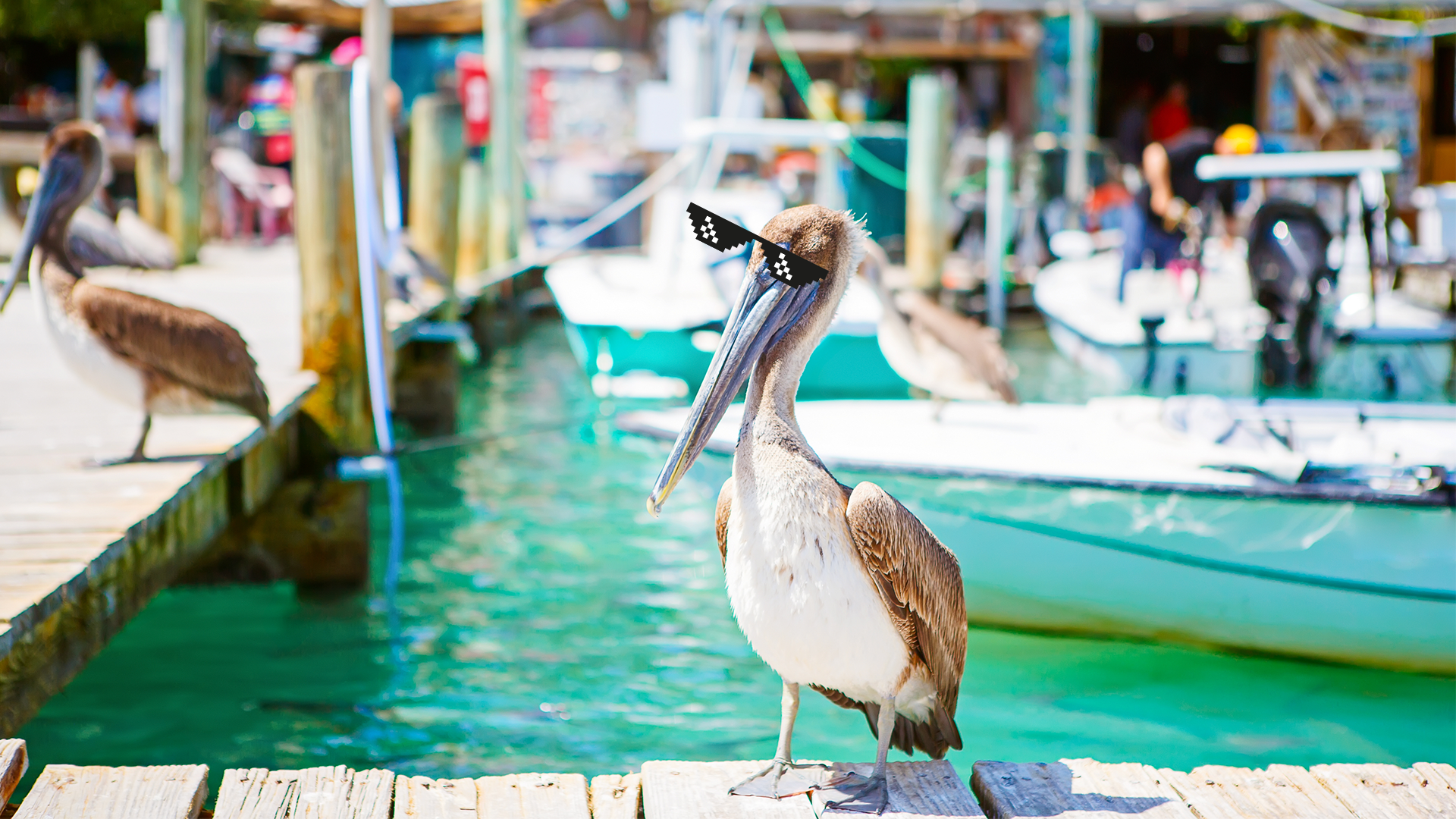
Who doesn't love a good comeback story? The population of brown pelicans started to decline in the 1940s, mostly due to a pesticide called DDT that was sprayed on crops in their native habitats. The run-off from the spray entered the oceans, and dosed the fish that the brown pelicans fed on. While it's thought that not many birds were directly killed by DDT, it did have the unfortunate effect of weakening the egg shells of the brown pelicans (as well as bald eagles and peregrine falcons), which led to a massive population decline. In the state of Louisiana, the population of brown pelicans went from 5,000 breeding pairs in 1938, to total extinction in 1963! When DDT was banned in 1972 thanks to a massive public outcry, brown pelicans made their dramatic return! Unfortunately they were one of many species affected by the 2010 Deepwater Horizon oil spill, and population figures are still down as a result.
11. They have an interesting way of cooling off
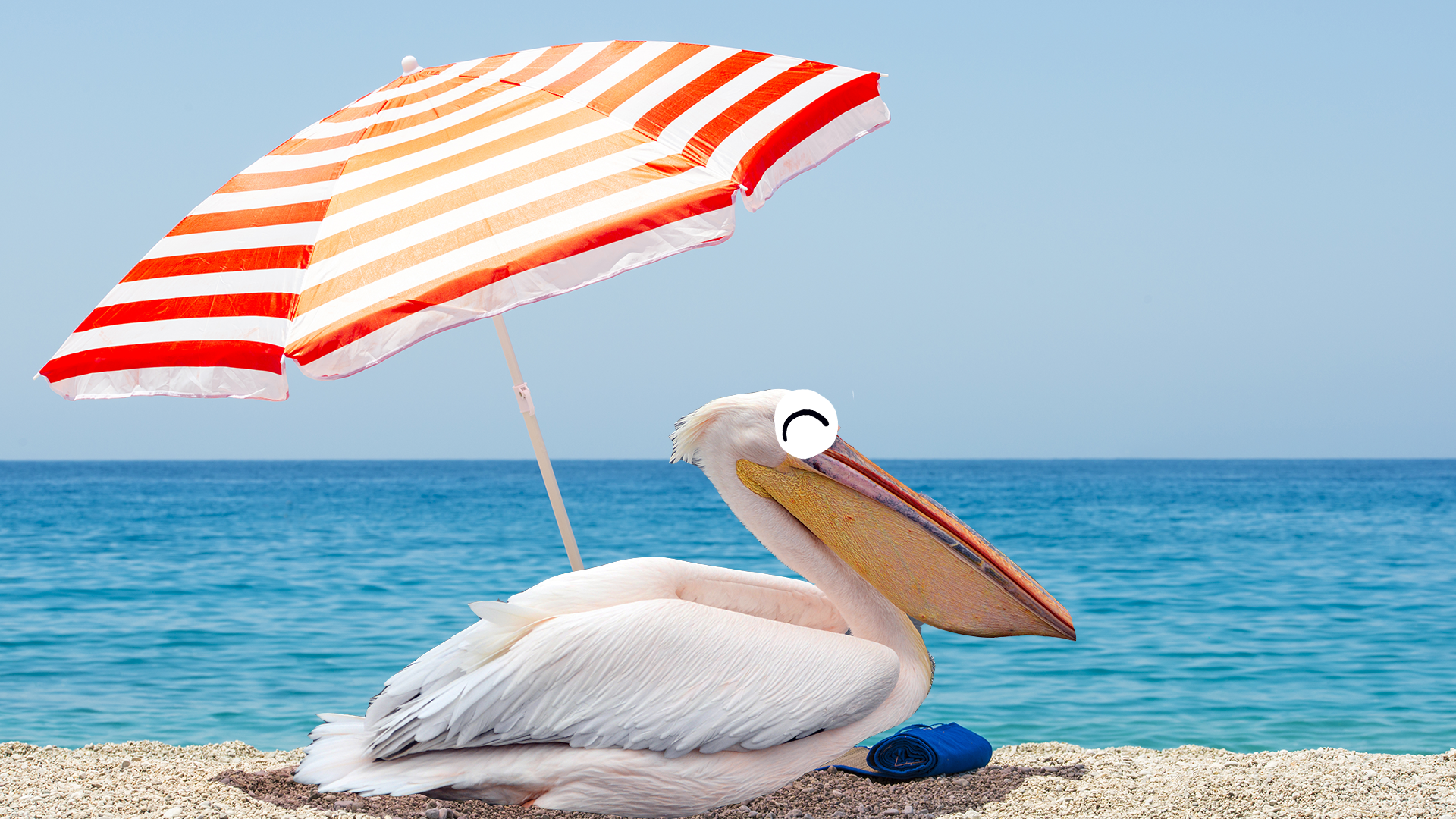
Do you hate overheating? Pelicans do too! That's why they have a special technique for keeping cool. While roosting in the hot sun, they open their mouths and flap their gular pouch, which helps circulate cool air. They also stretch their wings to make a kind of parasol against the sun, which their strong chest muscles help with!
12. They are important in Christianity, thanks to a misconception
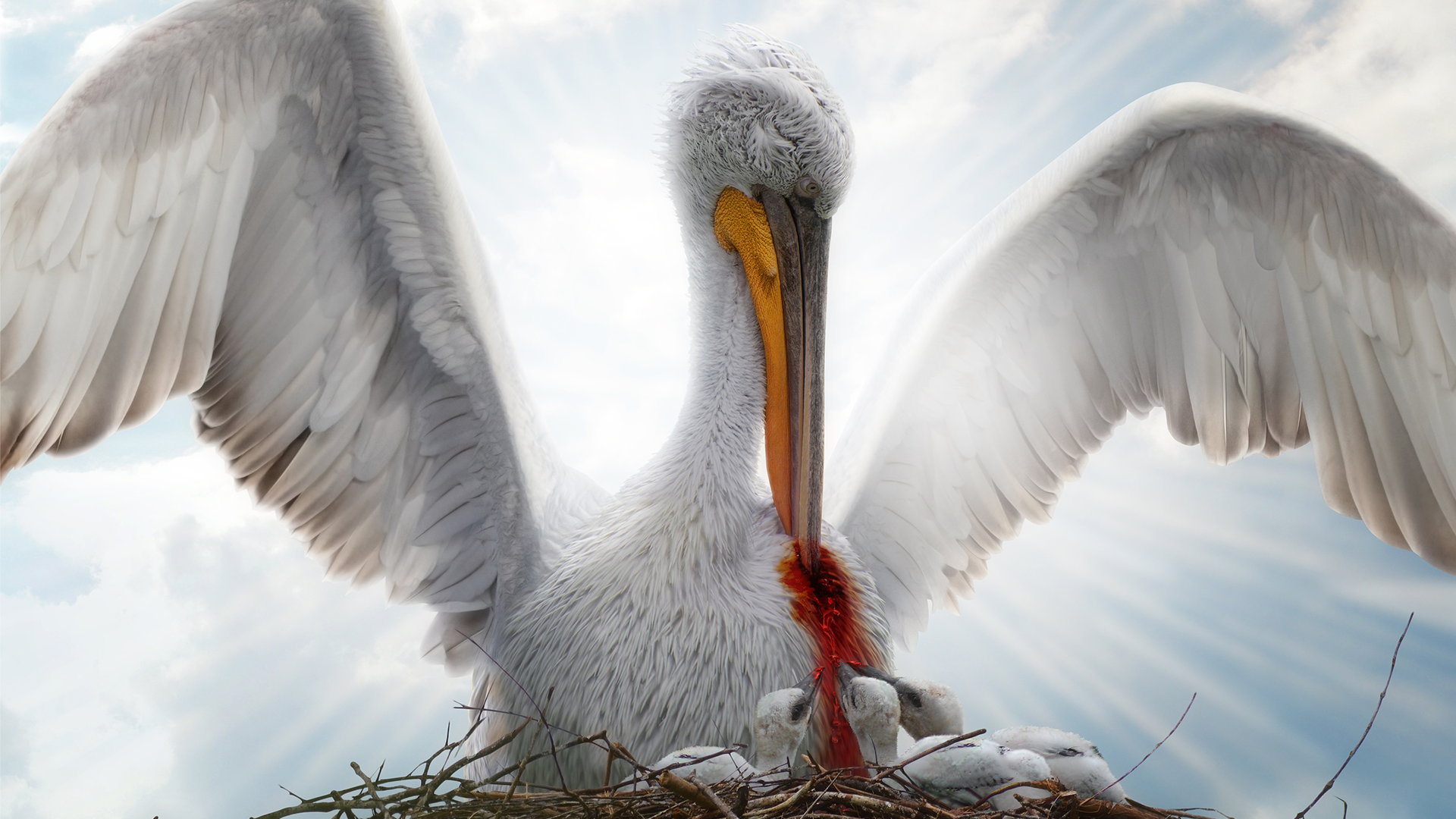
Pelicans play a very interesting part in Christian symbolic imagery! They were used as symbols of the sacrifice Jesus Christ made on the cross, and of the punishment God will inflict on sinners. This is because of a misconception from an early Christian text, which claimed that adult pelicans would kill their young if they struck out at their parents, but would mourn them for three days and then bring them back to life with their blood. A later text also claimed that mother pelicans would feed their young with blood plucked from their own breast - another symbol of Christ's sacrifice. Neither fact is true, but they led to a lot of symbolic art, and the adoption of the pelican in heraldry. Heraldry is the name given to the images used on flags, shields and coats of arms, used to represent a family, region, country, or other group. The pelican symbolises a caring and sacrificing parent, and you can still see it used in several modern logos. The Irish Blood Transfusion Service's logo features a pelican, for example.
13. Elizabeth I was a fan
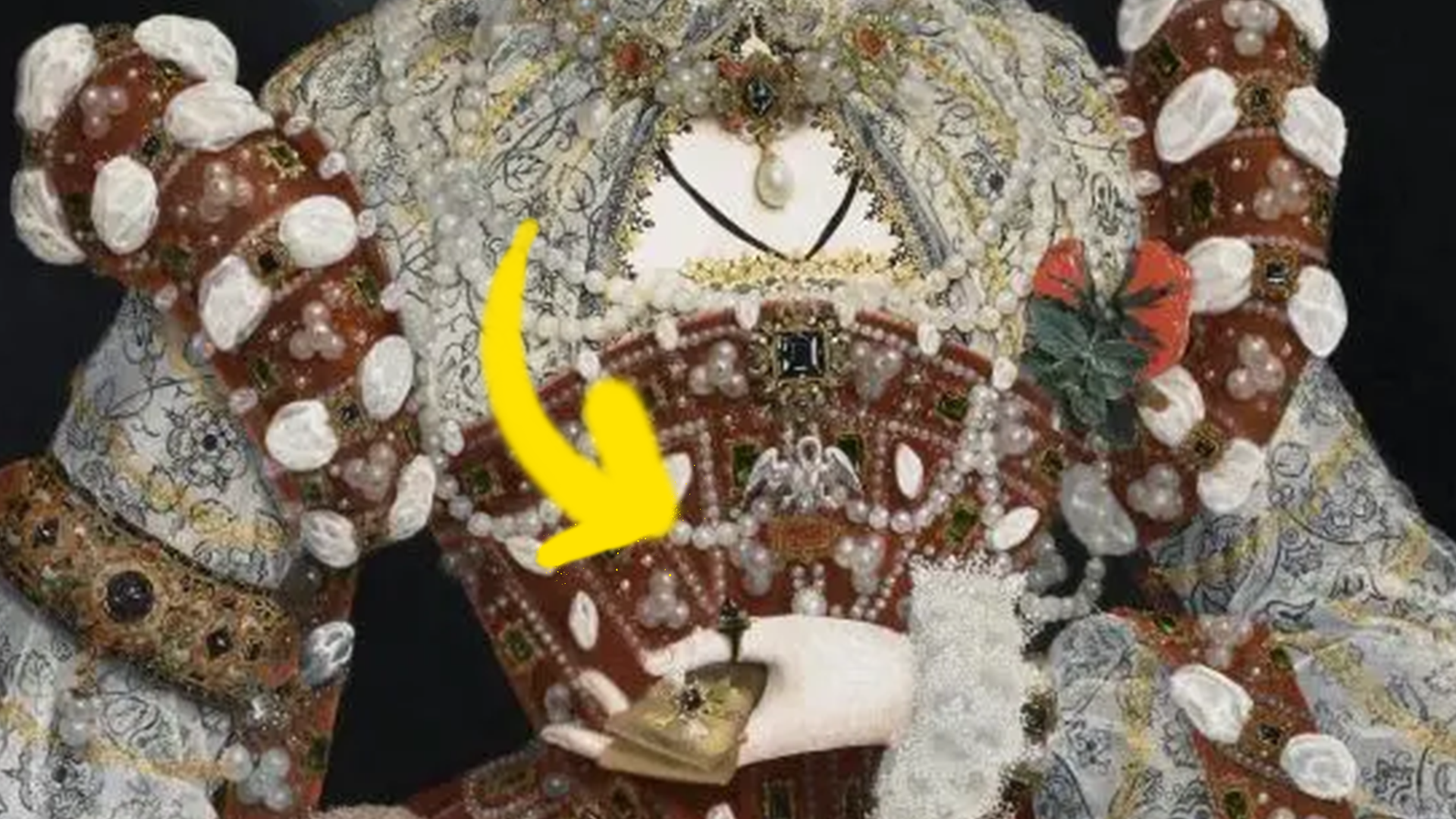
Elizabeth I, who ruled England and Ireland between 1558 and 1603, took her job as Queen very seriously. She never married, saying that she was already married to England. One of the most famous pictures of her, Nicholas Hilliard's The Pelican Portrait, shows her wearing a symbolic pelican on her chest. This was to show her as the self-sacrificing mother of England, and as the mother of the Church of England.
14. They show up in other folklore, too!
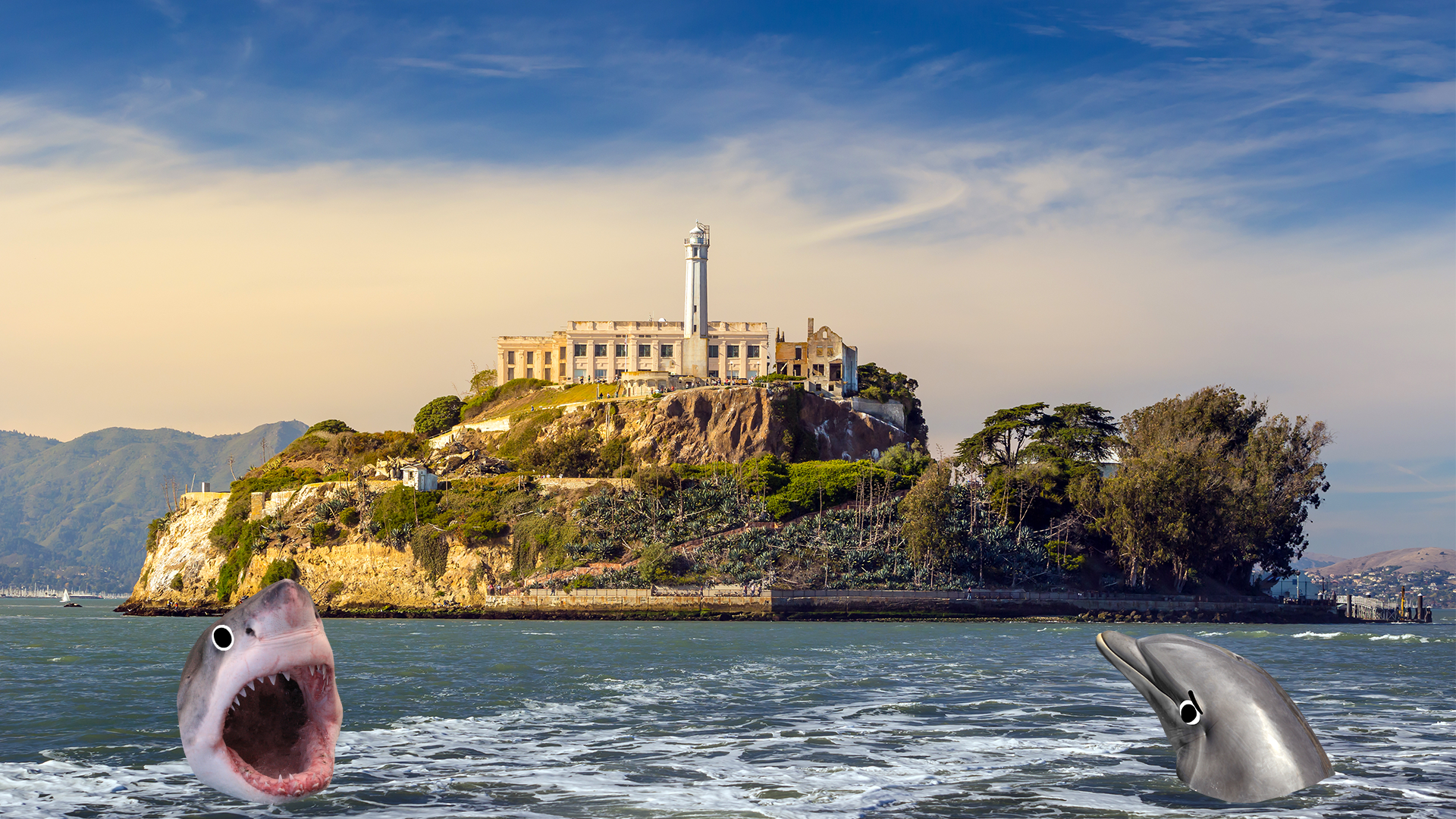
Pelicans are widespread and have been around for a long time, so it makes sense they'd pop up in other folklore and religious beliefs! In ancient Egypt they were associated with death and the afterlife, and it was thought that the pelican could foretell safe passage into the afterlife when someone died. They feature a lot in funerary texts and on the walls of tombs, and it was thought that they offered protection against snakes. One of the myths of the indigenous Murri people of Australia describes how the Australian pelican got its black-and-white feathers - he used to be all black, until he daubed himself in white war paint. You may have also heard of Alcatraz, the infamous former prison island in the San Francisco bay. The name comes from the Arabic al-caduos, which is the name of a water-carrying vessel - a bit like a pelican's pouch! Lots of brown pelicans made the island their home, and so the name stuck.
15. You can visit them in London!
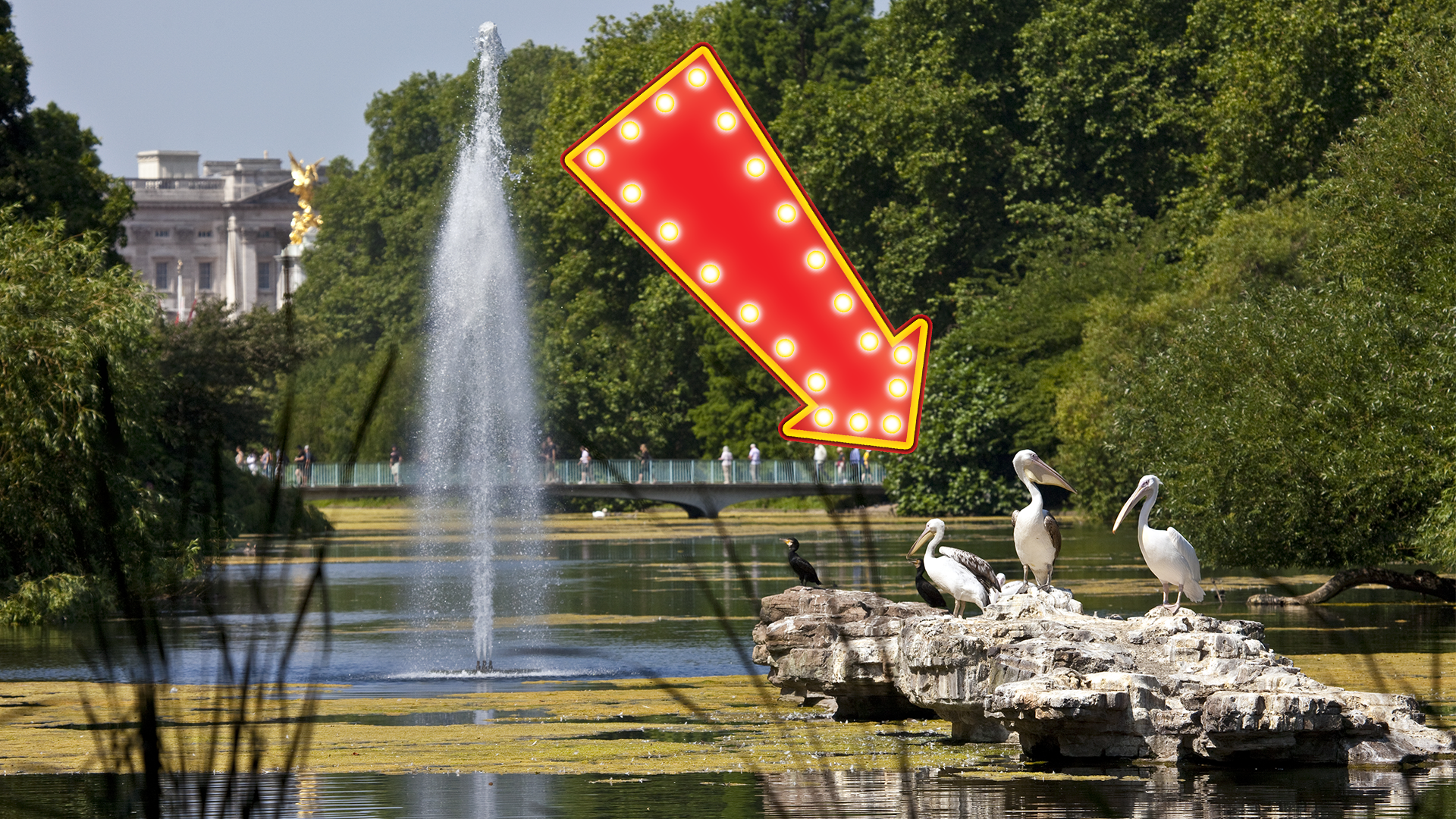
If you live in London, or are planning a visit, you can come face-to-bill with some pelicans while you're there, at St. James Park! They were first introduced in 1644 as a gift to Charles II from the Russian ambassador, and they've lived there ever since (though the ones you'll meet aren't descendants of the originals). One particularly audacious pelican used to fly over to London Zoo to steal fish! Six pelicans currently call the park their home - Gargi, Isla, Tiffany, Sun, Moon and Star. They're free to roam and are usually friendly, and if you're lucky one might sit beside you on a bench. If you visit between 2.30pm and 3.30pm, you might see them being fed!





